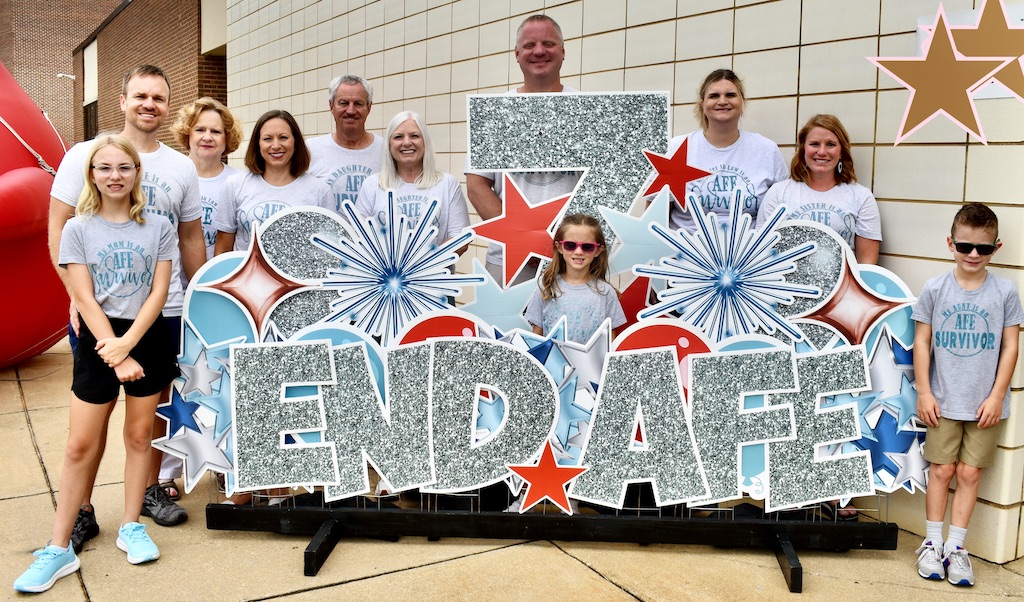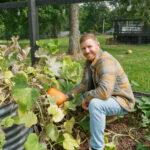By Hanna Allen
Photos by Amanda E.H. Pritchard & Contributed
Katie Dawson had no reason to believe anything would go wrong the day she delivered her second daughter.
“The pregnancy was healthy and great, and we were 40 weeks and a few days,” Dawson said. “I was induced, and I was about five centimeters when I started having extreme nausea. Then quickly thereafter, I had shortness of breath and my vitals started dropping, and the baby’s vitals started dropping.”
Her husband, Nick Dawson, standing nearby, knew something was wrong.
“She moved position onto her side, and I could tell something was off,” he said. “She grimaced on her face, and immediately she started getting to where she couldn’t breathe.”
A nurse went to get help.
“It felt like pretty quickly they said, ‘Hey, we need to go do an emergency C-section,’” Nick said. “In the back of my head, I’m thinking, well, emergency C-sections happen. They’re professionals. It is going to be okay.”
Katie was rushed to the operating room.
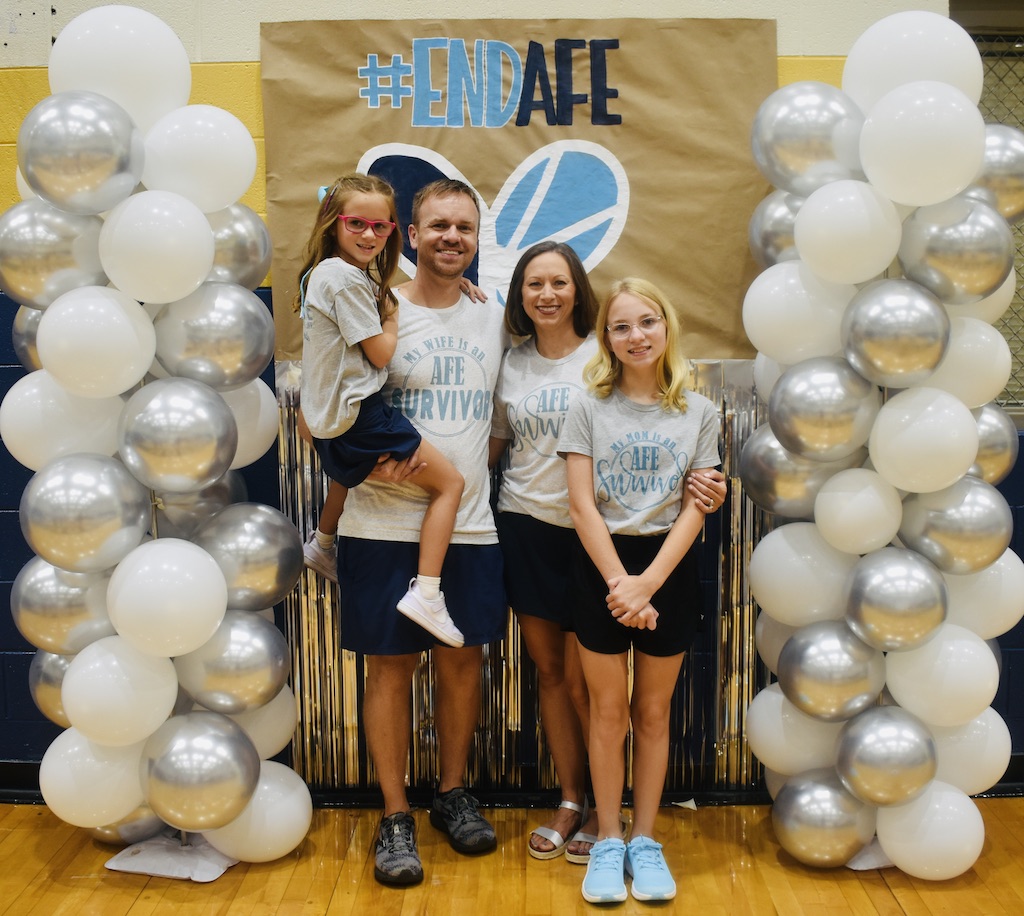
“During the C-section, I was having excessive bleeding. They tried different medications and started giving me some blood,” she said. “They got it to slow down to where they felt comfortable enough to close the incision and prep me for recovery.”
Nick stood on the other side of the curtain, holding newborn Cate Dawson, while the medical team finished surgery.
“Everything seemed okay at first. The staff had exited the OR (operating room). A couple of nurses stayed behind to clean up,” he said. “One of the nurses noticed something about Katie’s abdomen. She didn’t like what she was seeing.”
That moment changed everything again.
“They opened me back up and they did an emergency hysterectomy,” Katie said. “That’s when I started receiving more blood and blood products.”
Nick watched as the medical team rushed back in.
“She was having a lot of bleeding internally,” he said. “I got escorted out of the OR. In hindsight, I think that may have been because of the potential gravity of the situation.”
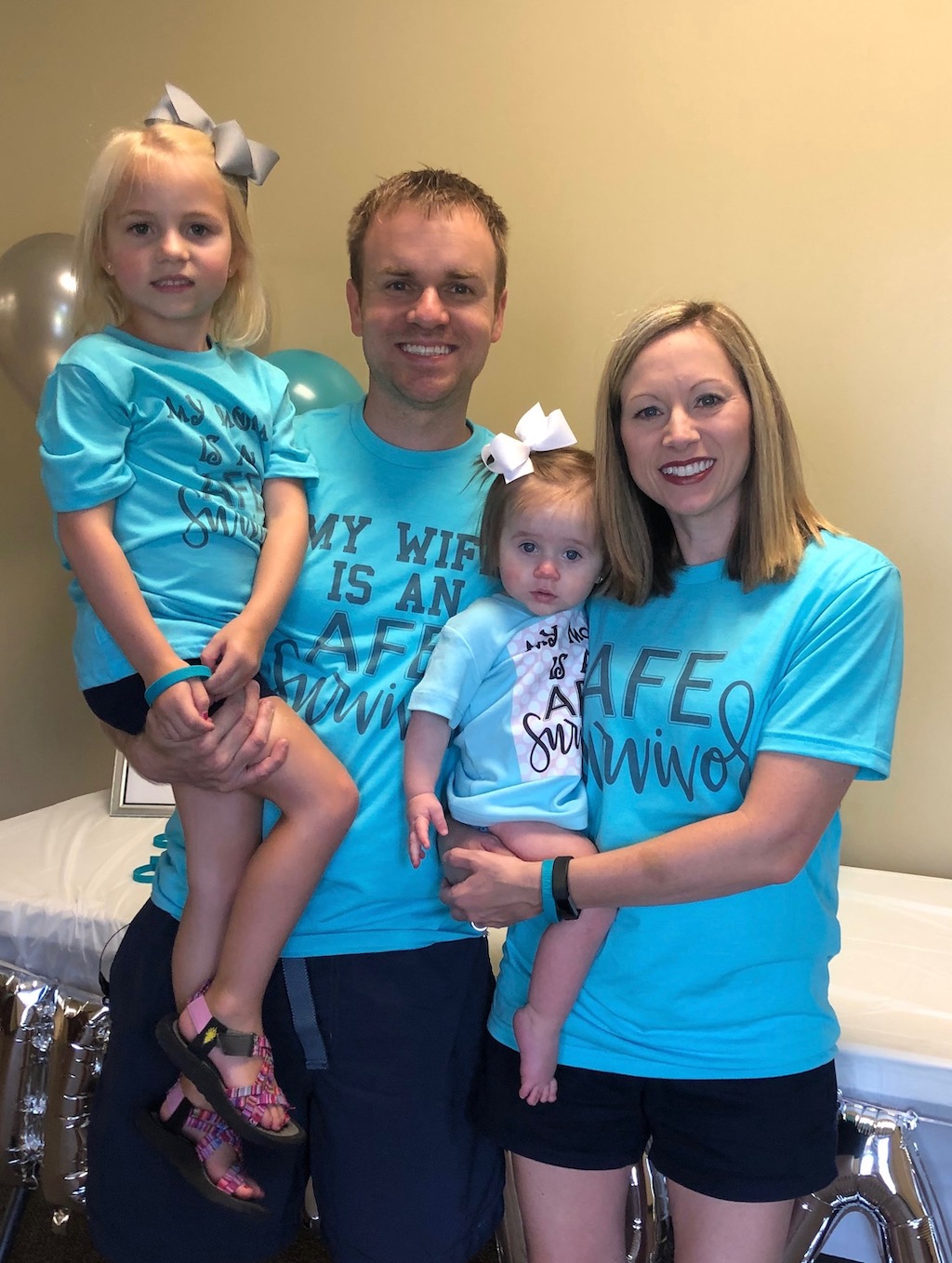
He waited in a recovery room, holding Cate, while doctors fought to save Katie’s life.
“You’ve been hit with a ton of bricks all in a short period,” Nick said. “I’ve got my beautiful new baby daughter in my arms, but I know my wife, Katie, is in there fighting for her life.”
Eventually, a doctor came in to tell him Katie was stable. Later, she was moved to the intensive care unit.
“I think it was the reaction time by the staff that probably helped me,” Katie said. “I don’t know how, but it was a much better turnout than what it could have been.”
After a day in the ICU, she was moved to the birthing suites.
“I was there seven days total,” she said. “I couldn’t even hold Cate at first. My arms were so bruised from all the blood draws. My stomach was in so much pain.”
Nick still remembers the moment Katie got to hold their daughter.
“They wheeled her into the room, and she got to hold Cate for the very first time,” Nick said. “It was just this amazing moment.”
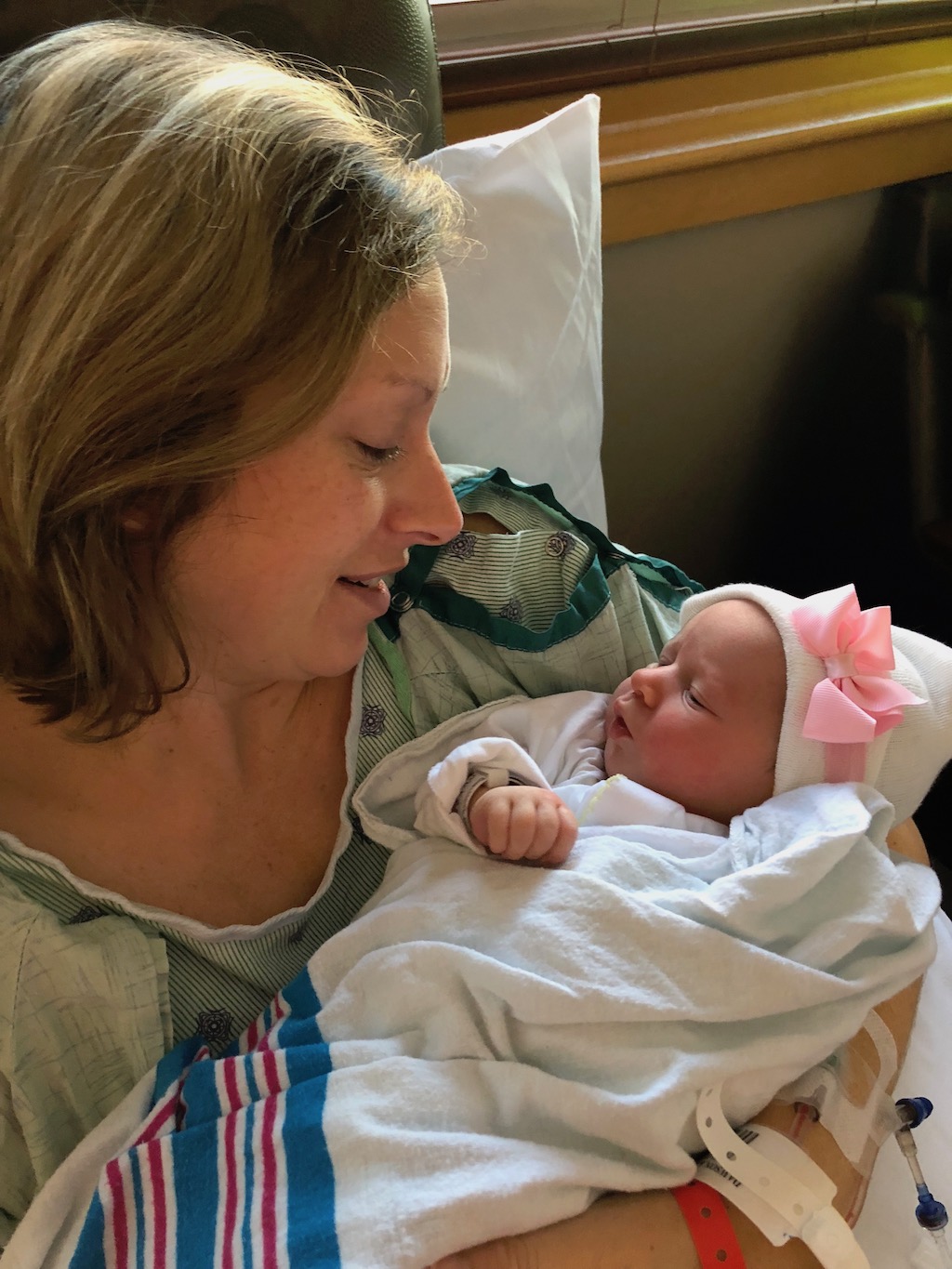
What Katie did not know at the time was that she suffered an amniotic fluid embolism. This rare and often deadly complication occurs when amniotic fluid enters the mother’s bloodstream and triggers an allergic-like reaction. This can lead to cardiovascular collapse, respiratory failure and massive hemorrhaging.
“I didn’t know what had happened,” Katie said. “It’s been a learning experience, but we’re just very grateful that we’re both healthy.”
Even years later, Katie is still fighting but in a different way.
“It’s hard to process how your brain works after trauma,” she said. “Your mind is wild, how it works and how it plays on you mentally. You know, PTSD, that’s such a real thing.”
Katie began therapy, early morning exercise and medication to manage her mental health.
“I started back exercising when Cate was a toddler to help reduce stress and anxiety and my overall well-being,” she said. “It’s not always easy, especially at 5 a.m., but I know I need it for my physical and mental health.”
“Katie has done a tremendous job,” Nick said. “Seeking help, talking to counselors when she needs it. She’s doing an amazing job of fighting, battling, being a mom, being Katie and being herself. That’s her. She’s a fighter.”
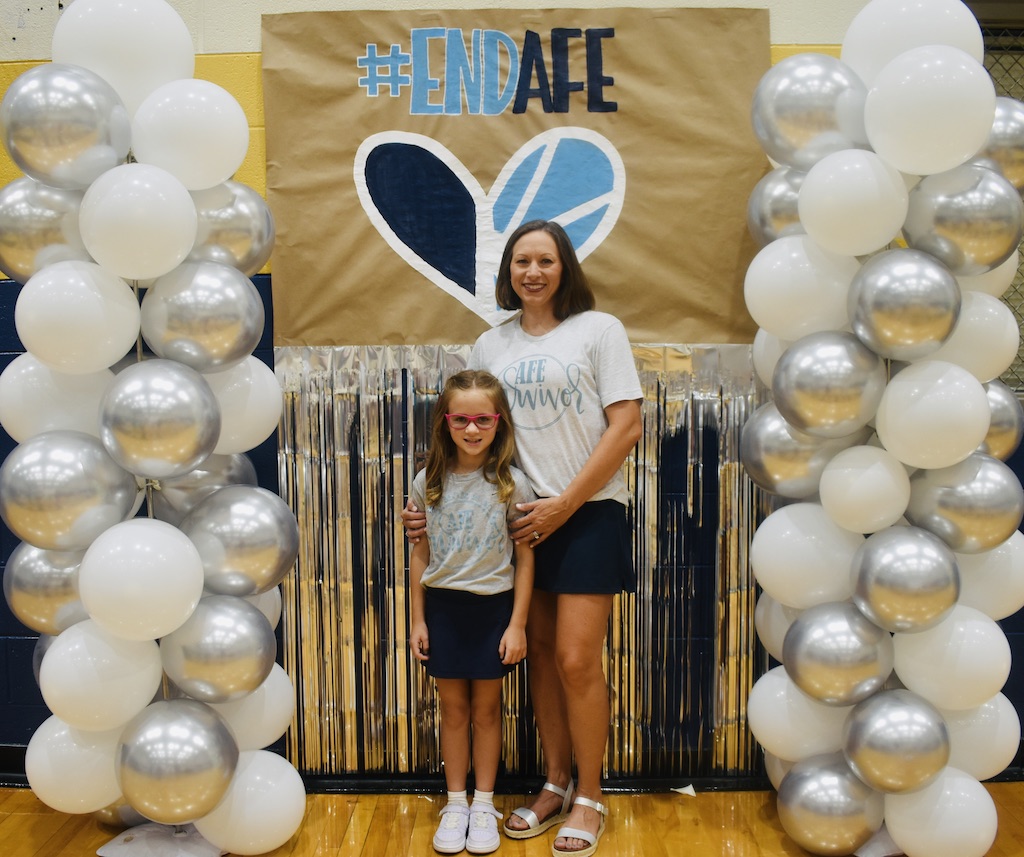
In the months following her recovery, Katie found herself looking for a way to give back.
“I kept thinking, ‘What can I do to give back?’ Because I felt so blessed,” she said. “We thought of a blood drive, and I later learned, through the foundations, that that’s not uncommon for survivors to do because the medical field needs blood.”
The Dawson family hosted their first AFE Awareness Blood Drive in July 2019.
“I wanted it in my community because our community is close,” Katie said. “At first, we thought, ‘If we have 20, that’ll be a big turnout.’ And we had 60-something in our first year.”
Laura Beth Mills, Katie’s sister, helped organize that first blood drive and continues to now.
“Katie and Nick were determined to raise awareness for AFE, especially since none of us had heard of it before her experience,” Mills said. “Recognizing this knowledge gap, they decided that a blood drive could not only spread awareness, but also save lives.”
Over time, the blood drive outgrew its original location at Moody City Hall and moved to Moody High School.
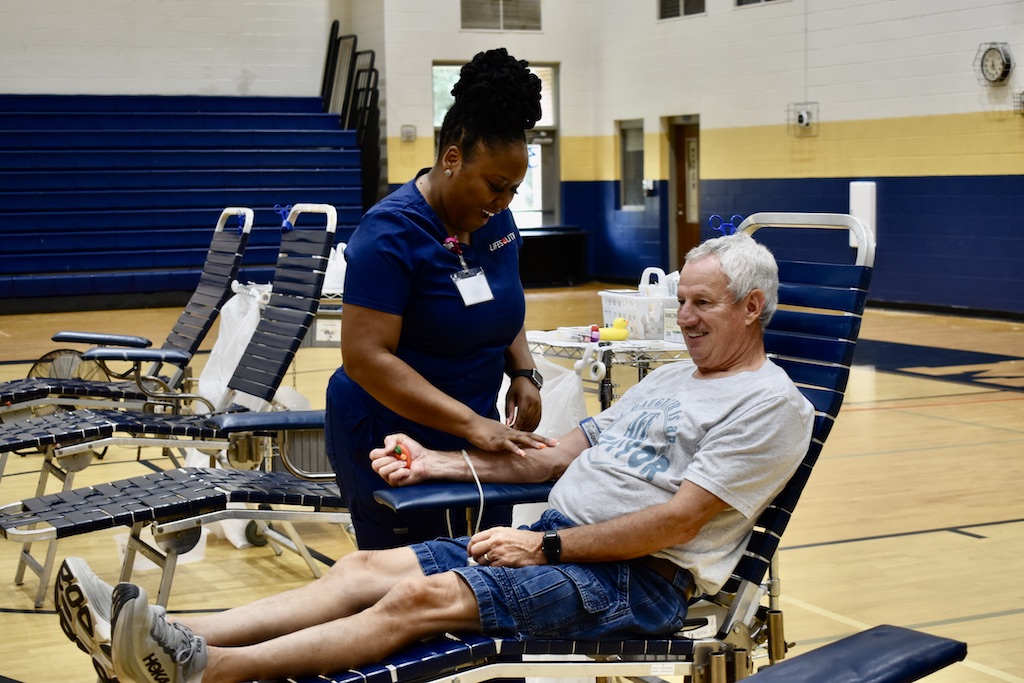
“Our dad has a lot of great contacts and reaches out to Pepsi to make some signs we could hang in popular areas of the city, I try to help my dad and sister with signs, and I also handle most of the social media posts to help spread the word,” Mills said. “I try to reach out each year to local news stations for coverage. Honestly, it is a big family effort, and everyone pitches in when and where they are needed.”
If giving blood is not an option, they also raise monetary funds through the event.
“We have a table with information about AFE, and we also have a donation box,” Katie said. “If you would like to make a monetary donation to AFE, it will be directed to them. We do not profit from this at all.”
Looking forward, the Dawson family remains committed to keeping the drive going.
“We start planning about a year in advance,” Mills said. “Then from there, things get going usually around March. The drive is hosted annually in July.”
The family’s ultimate hope is that more people learn about AFE and how to respond effectively.
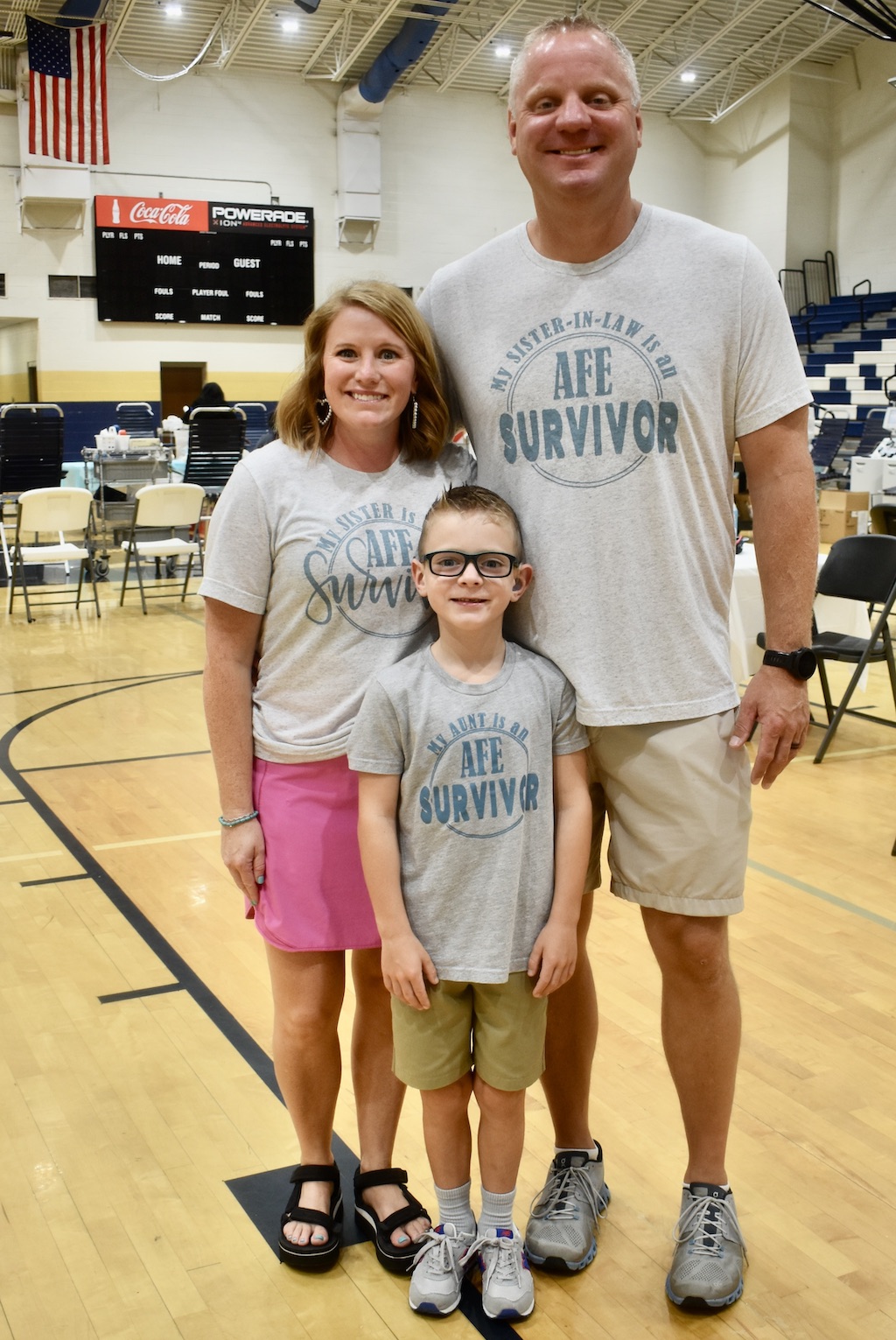
“The more people that can learn about it, the more the healthcare providers can learn about it, then the better the response and reaction to what’s happening,” Katie said. “We’re not here to frighten those who want to become pregnant or who are pregnant, but we want to raise awareness.”
In addition to awareness, they acknowledge the necessity of blood products in situations like these.
“At any point, tragedy can strike any of us,” Nick said. “You can find yourself in a hospital and needing blood products. The last thing you want to be faced with is that they’re trying to figure out where to get it from.”
Katie keeps that perspective close.
“I always say, ‘If you’re thinking about donating, just try,’” she said. “Prop your feet up, make sure you’ve had plenty to eat and drink. Don’t look at the needle. Just relax. They’re going to take good care of you.”
Her reason is simple.
“The main purpose is that the donor is giving someone a chance at life,” Katie said.
That philosophy has led to seven blood drives and counting.
For more information on AFE or to donate online, visit afesupport.org.
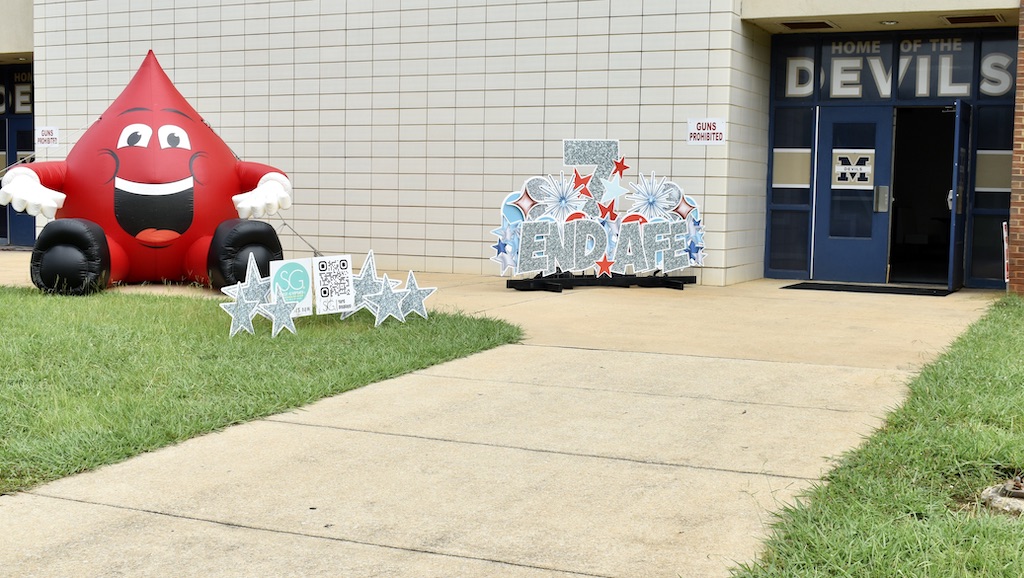
Amniotic Fluid Embolism Foundation
The Amniotic Fluid Embolism Foundation is the beneficiary of financial donations from the Dawson’s blood drive.
According to its website, “The Amniotic Fluid Embolism Foundation is a non-profit organization committed to identifying the cause, diagnosis, prevention and treatment of amniotic fluid embolism.” They also bring information and resources to healthcare providers and impacted families through education and support programs and aim to guide those affected in their emotional and physical recovery.

